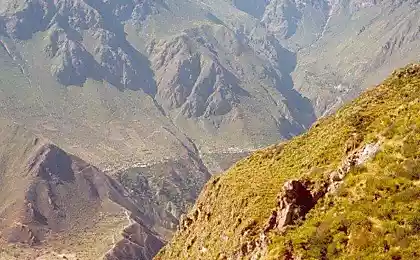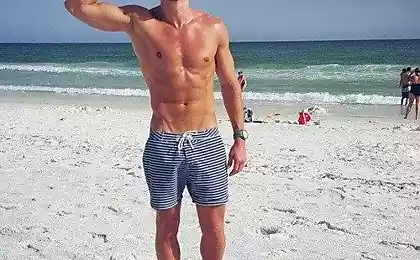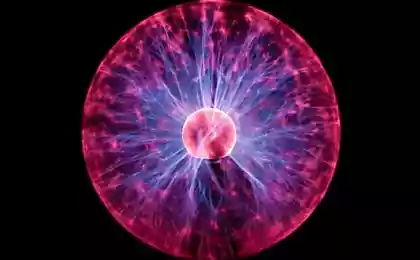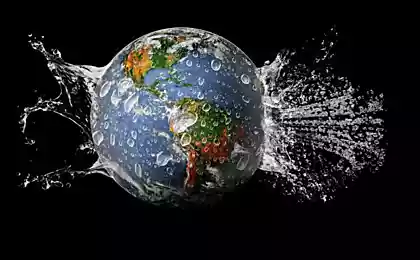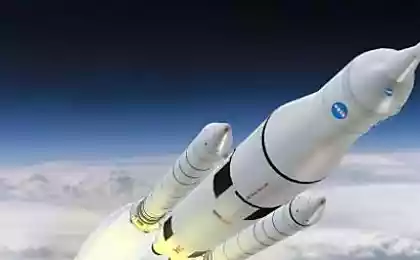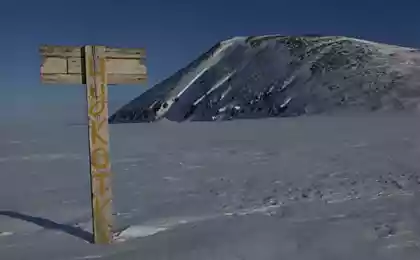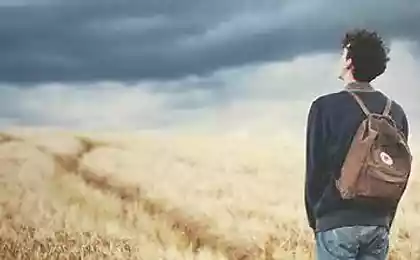748
The most fantastic places in the world (9 photos)
On Earth, there are many interesting and unique places that can surprise his views, looking at that you might think that this is completely different landscapes of planets.
STRUCTURE Richat Mauritania

We have all seen photos of the mysterious Great Red Spot of Jupiter, which has no solid nature, and is a giant atmospheric obrazovaniem.Esli viewed from space, the Earth can be found in the area, resembling a mysterious spot - a structure Richat in Mauritania with a diameter of 50 kilometers. When astronauts first noticed Richat in 1960, they believed that the crater was formed because of the huge meteorite strike. But this version has not been confirmed. Now scientists suggest that the structure Richat occurred as a result of erosion.
AKATAMA DESERT, CHILE

Atacama stretches for 1,000 kilometers from the southern border of Peru to northern Chile. This place climatologists call absolute desert. Since then, people have begun to document rainfall, there has never been no rain! As a result, most of the area is completely devoid of vegetation. Atacama is more like a Martian landscape. NASA uses this Chilean desert test. For example, in 2005, the NASA probe found microorganisms in the seemingly barren desert soil. These studies are helping scientists to advance in the study of Mars. Despite the arid climate, in the Atacama live about 1 million. man.
Kilauea, Hawaii
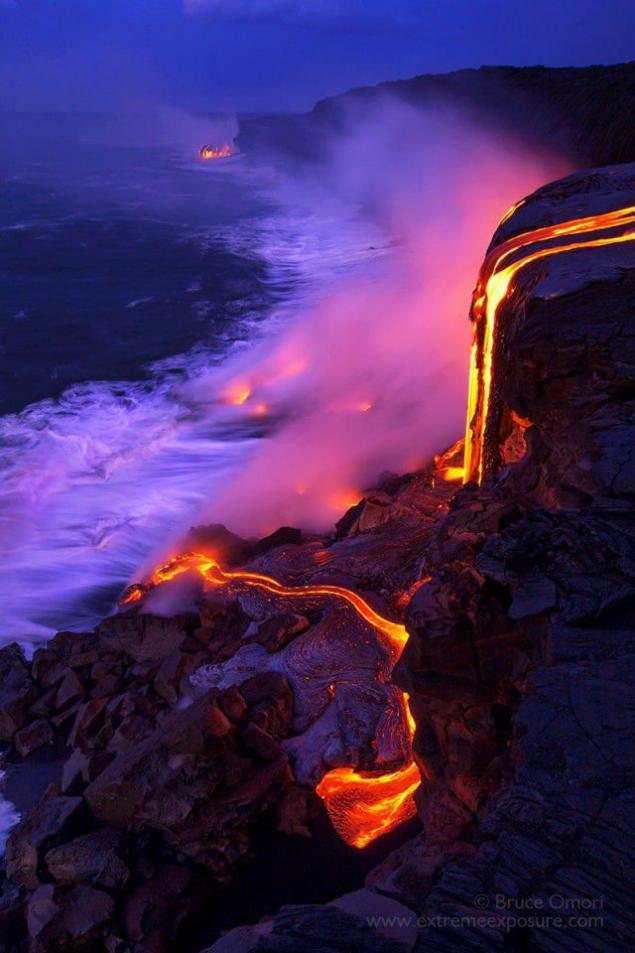
Venus, the second planet from the Sun, is home to volcanoes than anywhere else in the solar system. The landscape of the planet consists mainly of basalt plains - the type of rock formed by lava flow. On Earth, a place near the volcano Kilauea, Hawaii, is more reminiscent of landscapes of Venus. The youngest and the southernmost active volcano on the island erupted more than 34 times since 1952!
Craters of the Moon Idaho

Craters of the Moon - a National Monument in Idaho, USA. The territory of 1,600 square kilometers, has a startling resemblance to the craters on the lunar surface. In fact, this relief is a result of crustal movements and volcanic eruptions in the past 30 million years. Scientists predict that the eruption that will change the face of this territory, still occur.
McMurdo Dry Valleys, ANTAKTIDA

This place is more like a landscape of Pluto. 15,000 square kilometers of the valley have been carved by glaciers, leaving a layer of boulders, gravel and pebbles. The surface also contains deposits of marine sediments covering layer of soil, which has for millions of years.
The lack of ice in the area of Antarctica enables scientists to study the unique processes that affect the continent.
SLONCHAK Etosha, Namibia
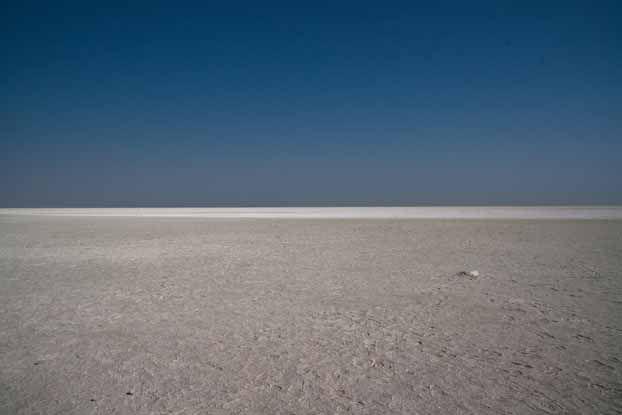
Etosha Etosha is the largest salt lake in Africa, visible even from space. It is a 4,800 square kilometers shimmering, dry, baked clay, which looks completely alien. When the researchers looked at the image of the hydrocarbon lakes Ontario, taken with the space probe on Titan (Saturn), we found an interesting resemblance to the salt marsh, located in Namibia. During the rainy season turns into Etosha closed lake, and in the dry season all the water evaporates, forming a surreal landscape.
The Pinnacles, Australia

And again on the desert. At this time the Australian.
The Pinnacles Desert in Western Australia is truly an alien species. These limestone rocks were formed under the influence of rain, sun and wind for millions of years. The spiers of some projections reach 3, 5 meters high!
RIVER RIO Tinto, SPAIN

Seeing the first time on photography Spanish River Rio Tinto might think that this is a photoshop. But this river really does exist! For thousands of years it has conducted mining operations, which negatively affects the river, whose waters have acquired a bright red color due to high acidity, heavy metals and bacteria, which oxidize iron and sulfur. Scientists are studying this ecosystem because of the similarity with Mars.
Waiotapu thermal area, NEW ZEALAND
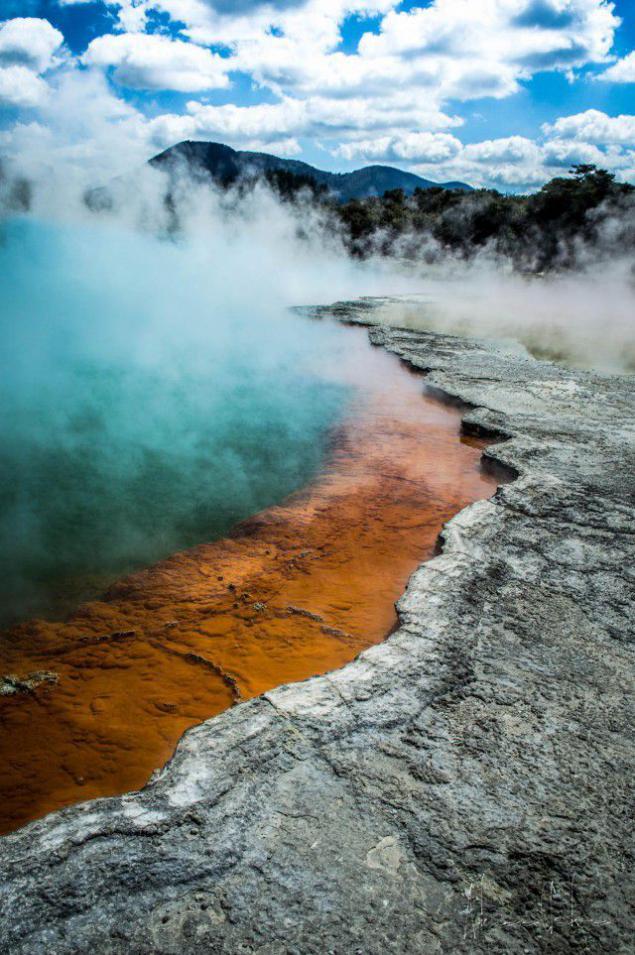
Waiotapu Thermal area occupies 18 square kilometers. This park geyser in New Zealand is a very popular tourist destination due to its unique extraterrestrial landscapes. Smells, by the way, there are also very specific.
STRUCTURE Richat Mauritania

We have all seen photos of the mysterious Great Red Spot of Jupiter, which has no solid nature, and is a giant atmospheric obrazovaniem.Esli viewed from space, the Earth can be found in the area, resembling a mysterious spot - a structure Richat in Mauritania with a diameter of 50 kilometers. When astronauts first noticed Richat in 1960, they believed that the crater was formed because of the huge meteorite strike. But this version has not been confirmed. Now scientists suggest that the structure Richat occurred as a result of erosion.
AKATAMA DESERT, CHILE

Atacama stretches for 1,000 kilometers from the southern border of Peru to northern Chile. This place climatologists call absolute desert. Since then, people have begun to document rainfall, there has never been no rain! As a result, most of the area is completely devoid of vegetation. Atacama is more like a Martian landscape. NASA uses this Chilean desert test. For example, in 2005, the NASA probe found microorganisms in the seemingly barren desert soil. These studies are helping scientists to advance in the study of Mars. Despite the arid climate, in the Atacama live about 1 million. man.
Kilauea, Hawaii

Venus, the second planet from the Sun, is home to volcanoes than anywhere else in the solar system. The landscape of the planet consists mainly of basalt plains - the type of rock formed by lava flow. On Earth, a place near the volcano Kilauea, Hawaii, is more reminiscent of landscapes of Venus. The youngest and the southernmost active volcano on the island erupted more than 34 times since 1952!
Craters of the Moon Idaho

Craters of the Moon - a National Monument in Idaho, USA. The territory of 1,600 square kilometers, has a startling resemblance to the craters on the lunar surface. In fact, this relief is a result of crustal movements and volcanic eruptions in the past 30 million years. Scientists predict that the eruption that will change the face of this territory, still occur.
McMurdo Dry Valleys, ANTAKTIDA

This place is more like a landscape of Pluto. 15,000 square kilometers of the valley have been carved by glaciers, leaving a layer of boulders, gravel and pebbles. The surface also contains deposits of marine sediments covering layer of soil, which has for millions of years.
The lack of ice in the area of Antarctica enables scientists to study the unique processes that affect the continent.
SLONCHAK Etosha, Namibia

Etosha Etosha is the largest salt lake in Africa, visible even from space. It is a 4,800 square kilometers shimmering, dry, baked clay, which looks completely alien. When the researchers looked at the image of the hydrocarbon lakes Ontario, taken with the space probe on Titan (Saturn), we found an interesting resemblance to the salt marsh, located in Namibia. During the rainy season turns into Etosha closed lake, and in the dry season all the water evaporates, forming a surreal landscape.
The Pinnacles, Australia

And again on the desert. At this time the Australian.
The Pinnacles Desert in Western Australia is truly an alien species. These limestone rocks were formed under the influence of rain, sun and wind for millions of years. The spiers of some projections reach 3, 5 meters high!
RIVER RIO Tinto, SPAIN

Seeing the first time on photography Spanish River Rio Tinto might think that this is a photoshop. But this river really does exist! For thousands of years it has conducted mining operations, which negatively affects the river, whose waters have acquired a bright red color due to high acidity, heavy metals and bacteria, which oxidize iron and sulfur. Scientists are studying this ecosystem because of the similarity with Mars.
Waiotapu thermal area, NEW ZEALAND

Waiotapu Thermal area occupies 18 square kilometers. This park geyser in New Zealand is a very popular tourist destination due to its unique extraterrestrial landscapes. Smells, by the way, there are also very specific.





